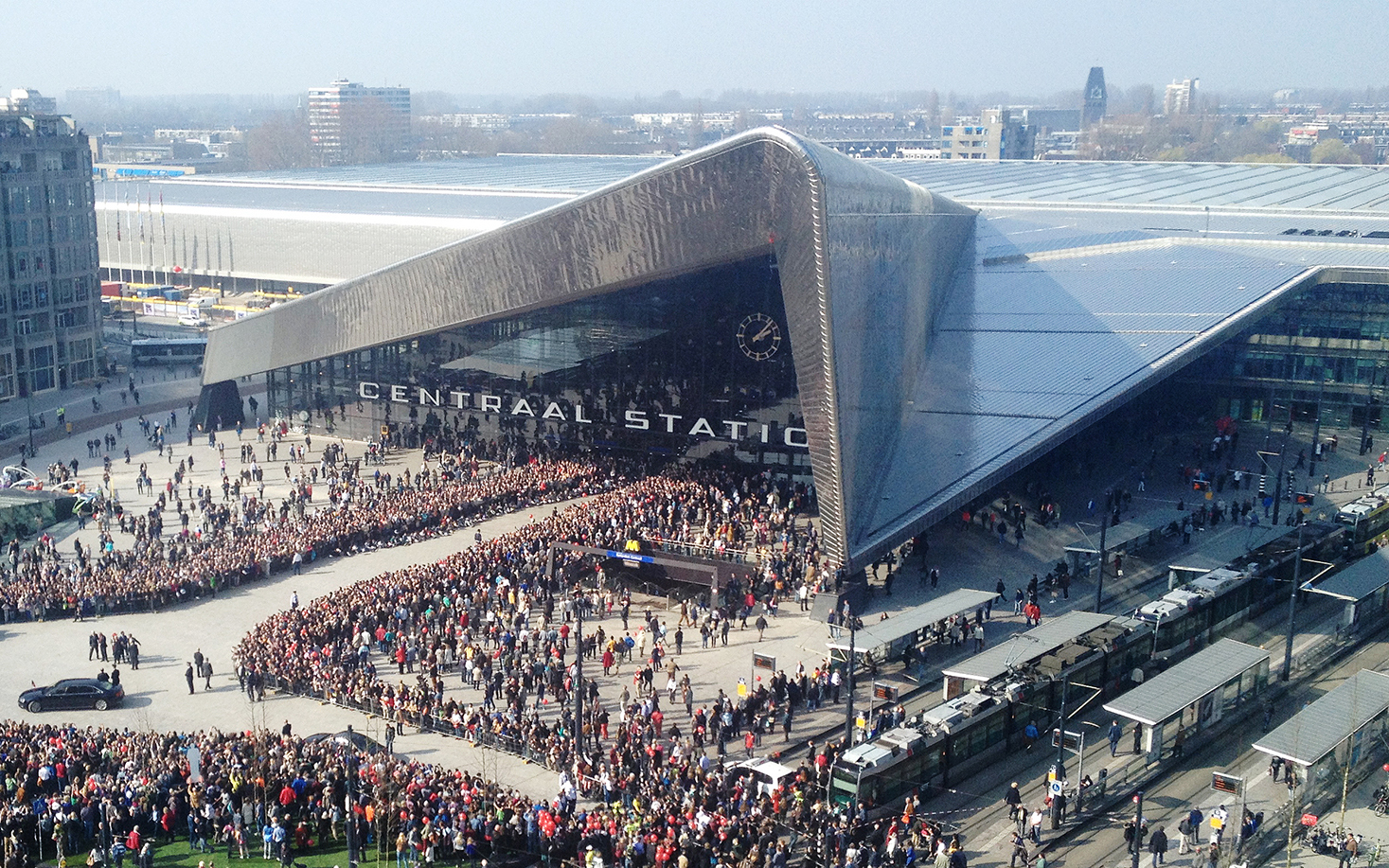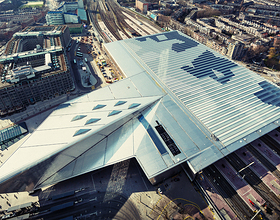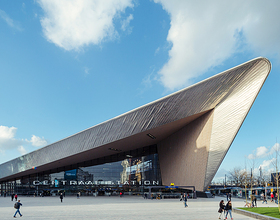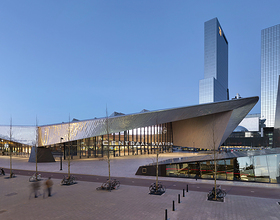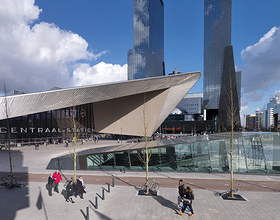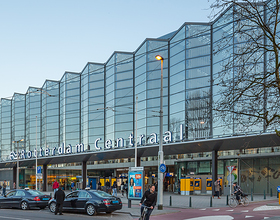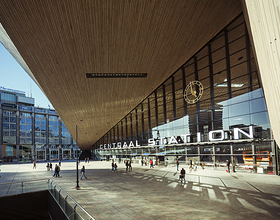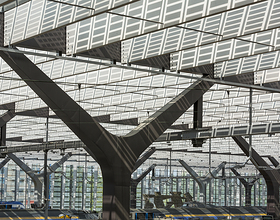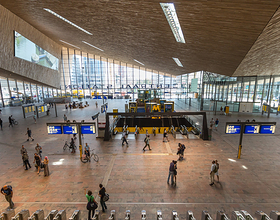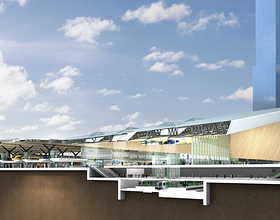ROTTERDAM CENTRAL STATION
-
The completion of the new 46,000 m² station has put Rotterdam central station squarely back on the map as a major city-centre hub. It plays an important role in the European network of high-speed rail connections, serving as a gateway to Europe.
It is here that countless European passengers enter and leave the Netherlands. This two-way connection between the city and Europe also adds an extra dimension to the station and its surroundings.
The old station – designed by Sybold van Ravesteyn – consisted of a standalone building out front, a tunnel and open platforms, each with their own canopy. It had ceased to meet users’ current needs and requirements in terms of both capacity and layout.
For these reasons, the City of Rotterdam and ProRail wanted to build a new station that would form a single entity for all its users. Team CS’s design certainly satisfied these requirements. The station hall now runs all the way through from Proveniersplein on the north side to Stationsplein on the south side.
The 250 meters wide platform roof forms a single entity with the main entrance hall and passenger thoroughfare.
The new Rotterdam central station is particularly well laid-out. They achieved this by adhering to a single guiding principle – trains and all station facilities and amenities had to be under one roof. The result is a pleasant, open and transparent public transportation hub that has become a meeting place for passengers and Rotterdam’s residents alike. Because the station is now inextricably intertwined with the city’s urban transportation network, it connects and unites many of other facets of the city to create a cultural hub, as well.
This modern and efficient building provides every facility, amenity and comfort imaginable for passengers travelling to and from Rotterdam, now and in the future.
The roof that spans the entire station creating a single entity is actually made up of two halves – a high, light section vaulting the tracks and trains, and a more imposing section over the main entrance hall clad in shiny stainless steel. This is a reference to the glistening River Meuse that flows through the heart of Rotterdam.
The roof above the main entrance hall is a steel structure of an immense span supported at just two points founded on the subway station’s diaphragm walls. To soften the awe-inspiring scale of the new station, they opted for a warm, wooden cladding for the enormous roof’s interior.
The huge difference in character between the areas to the south and north of the station adds to the location’s charm. To the north is a residential neighbourhood.
To the south is the city centre. To the north of the station, they opted for a modest, transparent hallway that blended with the character of the late nineteenth-century Proveniers district. Here, they avoided any major expansion and focused on improving the existing landscaping in the immediate vicinity of the station. To the south, they purposely wanted to create something more outspoken with a certain majesty and allure, in keeping with the scale of its surroundings including the Groot Handelsgebouw building and the high-rise buildings along Weena. The main station hall’s stunning design reflects Rotterdam’s cityscape with its metropolitan architecture.
Roofing over the tracks has been fitted with over 130,000 solar panels covering some 10,000 m² of the total 28,000 m² of roof area. This makes it not only the most extensive use of solar panels on a station roof in the Netherlands, but also in Europe. The solar panels have been positioned on the sections of the roof that receive the most sunlight. Using solar panels resulted in an eight per cent reduction of CO2 emission levels for energy usage at the station.
The square in front of the station – Stationsplein – is a public space free of any traffic. They achieved this together with Rotterdam City Council by building a car park beneath the square for 750 vehicles and storage facilities for 5,200 bicycles. They also relocated the trams to the east side of the square. The square now stretches all the way to Kruisplein and then merges into Schouwburgplein.
Photo credits: Mvsa Architects
1870 Projects

